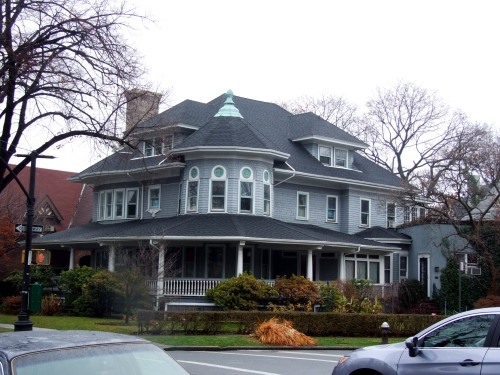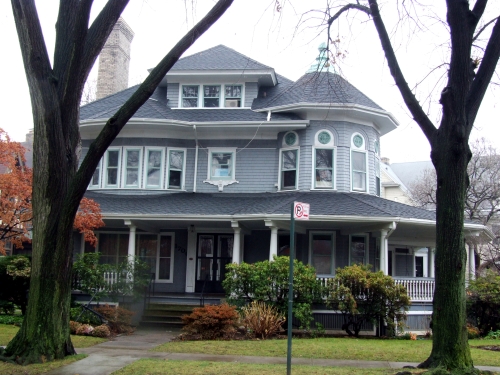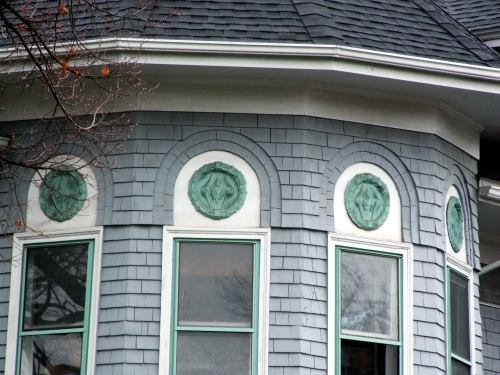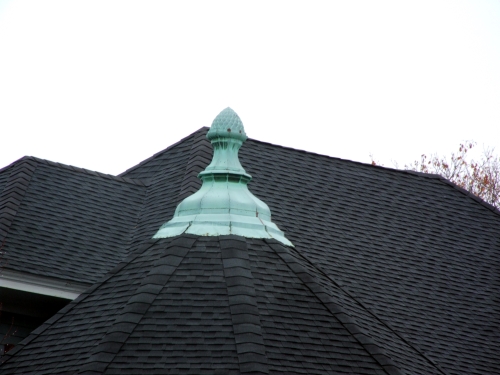Building of the Day: 1700 Ditmas Avenue
Brooklyn, one building at a time. Name: Private house Address: 1700 Ditmas Avenue Cross Streets: Corner 17th Street Neighborhood: Ditmas Park Year Built: Somewhere around 1902 to 1920 Architectural Style: Queen Anne/Colonial Revival Architect: Unknown Landmarked: Yes, part of Ditmas Park HD (1981) The story: I grew up in a large Italianate farmhouse in upstate…

Brooklyn, one building at a time.
Name: Private house
Address: 1700 Ditmas Avenue
Cross Streets: Corner 17th Street
Neighborhood: Ditmas Park
Year Built: Somewhere around 1902 to 1920
Architectural Style: Queen Anne/Colonial Revival
Architect: Unknown
Landmarked: Yes, part of Ditmas Park HD (1981)
The story: I grew up in a large Italianate farmhouse in upstate New York, a rambling 1860s farmhouse with fourteen rooms. For a child, it was heaven. My brother and I each had our own room, and my closet was a large walk-in room as large as some of the bedrooms I’ve seen in my adult life. We had secret rooms under the stairs, and doors that led to nowhere. The house had a huge L-shaped kitchen, large living room, dining room and library/music room. I have to admit, that house spoiled me, while it also hooked me on old house living. Much later, as an adult, my parents told me in no uncertain terms, “Don’t EVER buy a large old house if you can’t afford the constant maintenance.” They knew what they were talking about.
In retrospect, the house was never “finished,” and my parents were always making stop-gap repairs. The roof should have been replaced when they bought it, but wasn’t, and it leaked like a waterfall for years. The only bathroom was downstairs in what used to be the pantry, off the kitchen. We all had to trudge down from upstairs, in sickness and in health, my parents with the longest trip from the front of the house. Tree limbs fell, we had to dig a well, and house issues probably contributed to my parents’ eventual divorce, after 26 years of marriage. In one sense it truly was a monster that ate people. But to this day, I still love it.
Which brings me to Ditmas Park. With my parents’ words of wisdom in my ear, I gotta say, who cares, this is some house! Me want! I love big old houses. Most of the houses in Ditmas have well-documented pedigrees, but this one is a mystery. The city records as to its architect and the date it was built are unknown. Most of the larger prime lots on the avenues were snatched up between 1902 — when Lewis H. Pound began his Ditmas Park development — and around 1920. This house sits majestically on this large 60-by-90-foot lot, and is itself 4,520 feet spread over two stories and an attic.
It’s a Queen Anne/Colonial Revival on steroids, using all kinds of elements of both styles: The turret, gables, dormers, wide verandas and overhanging porches. The roofs would have been amazing in slate, paired with the shingles on the side. It is reminiscent of the Shingle Style mega-houses of McKim, Mead & White, believe it or not, but scaled down. It’s also got all kinds of other goodies in the octagonal turret, with decorative round shields, and stained glass panels in the front. The only visible exterior alterations were the addition of a concrete block structure in the rear, and the picture window to the left of the front door.
Perhaps these additions were made by one of the house’s early residents, a remarkable man named Jesse Tyler Dingee, who ran his successful cork business from his bed for over fifteen years. Incapacitated by arthritis, Mr. Dingee refused to retire, and between 1914 and 1929, when he died at the age of 63, he ran his business from the confines of his home. He had every new convenience put in, including headphones and mouthpieces over his bed for communication, and he listened to the radio religiously.
He was the head of several companies, including the Paddock Cork Company, was on the board of the United Cork Companies of Lyndhurst, and held a controlling interest in the Elliot Water Heater Company here in Brooklyn, among other business interests. He was able to send his family to Europe on vacation every year, and provide for them quite well. All knew him to be cheerful and involved, even though he didn’t leave his house. It was a great sadness that he died when only 63 years.
Mr. Dingee and subsequent owners seem to have had the wherewithal to keep up the large, landscaped property. Ah, to be able to have such a wonderfully LARGE house! You were right, Mom, I know it, but I can’t help myself. GMAP












What's Your Take? Leave a Comment